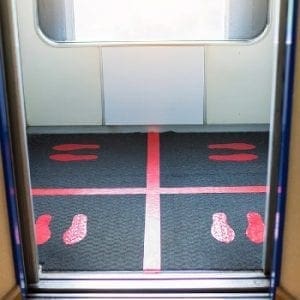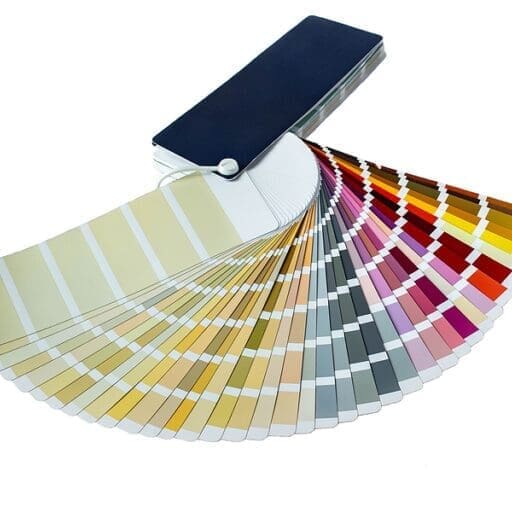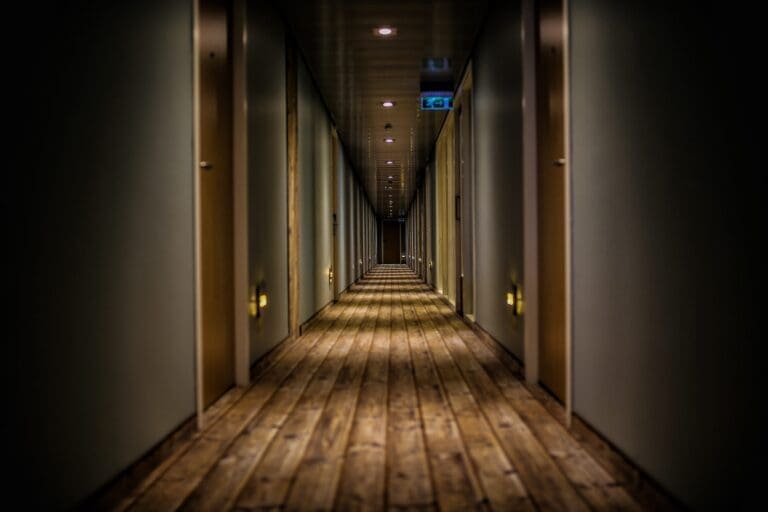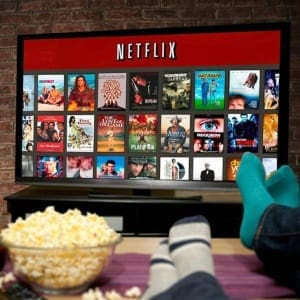 A few months before the Coronavirus outbreak, I published an article about Crime Prevention Through Environmental Design (CPTED). In it I explained that CPTED is nothing more than an enhanced version of the design strategy ‘Form Follows Function’ – well known amongst architects and interior designers. Designing hotels smarter, more practically, and with the knowledge we have today, can help to mitigate risks. In context of crime prevention, this means designing a property a certain way that reduces the risk of crime.
A few months before the Coronavirus outbreak, I published an article about Crime Prevention Through Environmental Design (CPTED). In it I explained that CPTED is nothing more than an enhanced version of the design strategy ‘Form Follows Function’ – well known amongst architects and interior designers. Designing hotels smarter, more practically, and with the knowledge we have today, can help to mitigate risks. In context of crime prevention, this means designing a property a certain way that reduces the risk of crime.
Six months later, after spending a large amount of time fighting COVID-19 as an-essential worker and Risk Navigator on the frontline, I realised the strong connection between CPTED, the Form Follows Function Principle and the way COVIDSafe plans are laid out. Since then, new lessons have been learnt and the world has a better understanding of communicable diseases.
New methodology in a new era
Albert Einstein once said, “We cannot solve our problems with the same thinking we used when we created them”. Very relevant, considering our global world has never seen anything like COVID-19. The extent of what the pandemic has done to the hospitality industry is far from fully understood. To solve the problems bit by bit and find solutions, we have to take a moment and look at it from a distance, as we are all still standing at the beginning of a new journey.
What if we equate these principles with the current COVID-19 guidelines, by viewing the coronavirus as an invisible perpetrator and treating it with the same awareness the hospitality industry learned to expose criminal perpetrators? If we do that, ‘Form’ becomes the quotient that represents the design factor, whereby ‘Function’ can be understood as the requirement to combat the spread of the virus. The result is an approach to mitigate risks, which I have named Prevention of Cross-Contamination Through Design (PCCTD). It is a methodology that is mirrored in our COVID-19 Edition of the Global Lighthouse Certification Program. In the context of communicable disease prevention, this means designing a property in a way that reduces the risk of infections.
The perpetrator’s profile
First, we must identify exactly with what we are dealing with.
According to the World Health Organisation (WHO), the COVID‑19 pandemic is an ongoing global pandemic of coronavirus disease 2019 (COVID‑19), caused by severe acute respiratory syndrome coronavirus 2 (SARS‑CoV‑2). Further, it says that the virus is primarily spread between people during close contact, most often via small droplets produced by coughing, sneezing, and talking.
Second, this means almost anyone can be a potential carrier of the virus. Taking this definition into account requires tlooking at the way hotels are designed today and how hotel personnel serve guests. We are certainly dealing with a virus that has changed the safety landscape in the travel and hospitality industry. Today we need to think differently, use more contactless techniques and learn new behaviours.
Finally, we have to ask the question is the virus our enemy? There is evidence that it is.
- We can’t see it, but we experience the consequences and what it is doing to the global economy.
- We can’t see it, so governments have introduced behavioural and design guidelines to reduce the risk of the virus spreading. But are these guidelines appropriate for our business? Often this is not the case.
- We follow directions of health experts and listen to what the World Health Organisation has to say.
- We share best practices on social media that spread sometimes faster than the virus itself.
Time for interior design 2.0
What we must do is treat it as if it is our enemy and accept the fact that it will stay around for much longer than suits our lifestyles. Redesigning hotels to protect staff and guests will occupy hoteliers for the next many months or years, trying to rebuild trust and demonstrating that hotels can be a safe haven to relax from the madness we are experiencing elsewhere.
Having said this leads me to my next questions. What changes are possible or necessary to protect people from this ‘enemy’? How far are we willing to go and what is acceptable by hotel guests?
Pressure like this has always lead to incredible creativity. One of the positive side-effects of COVID-19 is that leads to new opportunities in the market. If interior decorators, hotel developers, architects and hotel management could help control the spread by introducing sophisticated interiors and reinventing hotels, what would that be?
11 considerations to enhance safety
1. Personal hygiene
COVID-19 is creating new requirements for safety, taking changes to restaurants or restaurant-style venues into account. Washing hands prior to entering food serving areas is one of the challenging aspects that is forcing industry leaders to rethink existing designs. Some have already come up with innovative ideas, encouraging guests to wash their hands and make it a part of the dining experience. It is paramount to provide hand-washing facilities that include clean running water, liquid soap and paper towels. Perhaps we will find in future stylish washbasins with sensory water taps or hand hygiene stations with turnstiles at each entrance.
On board cruise ships, crew are using a special liquid soap prior to entering the crew mess that requires you to keep rinsing your hands with water for at least 10 seconds. Otherwise it won’t come off. I wouldn’t go that far, but there is a lot to learn from floating hotels.
2. Keep the energy flow
Where practical, hotels and restaurants should separate entry and exit points to minimise contact and mitigate the potential risk of cross-contamination. A designated exit in restaurants will help to prevent confusion and convey the right message – a small detail that can make a big difference in COVID-19 safety. Signage, barriers and communication with guests remains key!
3. Interior
The coronavirus has caused interiors to be set up a certain way to mitigate the overall risk. It has changed the way hotels and restaurants are now getting decorated using cleanable fabrics on upholstered furniture to keep people safe. Select materials that are easy to clean.
4. Social distancing by design
Consider social distancing measures for the layout of your seating areas in your foyer, F&B outlets, lounge and common areas. It says in guidelines that tables should be placed a certain way to ensure that persons seated at those tables are 1.5 metres (minimum) apart and you must reduce the number of tables and the seating capacity in line with public health directions. This can be implemented in very different ways, for example using pot plants, sculptures or elegant partition walls etc.
5. Floor markings
Social distancing measures must be clearly visible. It has become a best practice to install floor or wall markings or signs to identify the distance between people for queues and waiting areas. Everywhere we go we find colourful stickers on the floor telling us where to stand. At the beginning, we used sticky tape to mark a cross on the floor, few months later stickers replaced the tape solution. I can imagine that future aesthetics will foresee permanent design elements that will replace the stickers on the floor.
6. Tableware
Dispense from the use of tablecloths as it can lead to cross-contamination. More importantly, service staff should take extra precautions when providing cloth napkins (wearing gloves during folding and when removing dirty napkins etc.). The industry is now discovering that tablecloths must be finally removed from the inventory list, which follows the general trend of the bare table surface concept in gourmet restaurants.
7. Go contactless
Where practical, physical barriers should be installed, such as plexiglass/or glass around counters involving high volume interactions with guests to protect service staff from COVID-19. Avoid touch screens where possible. Unfortunately, the many self-service business centres in corporate hotels will have to remain closed and are part of the areas that will have to be reinvented.
8. Hand sanitiser
There are already stylish integrated sanitiser stations that truly invite guests to try it out. If hand washing facilities are not readily available, the property should provide an appropriate alcohol-based hand-sanitiser. We can get used to seeing hand-sanitiser stations throughout the entire hotel.
9. Elevators
Coronavirus has changed the way we ride elevators. The risk of cross-contamination in confined spaces, such as elevators, should be identified in the Risk Management Plan. Safety measures should be implemented for people using the elevators, such as limiting the number of people in the elevator at one time, providing hand-sanitiser, and ensuring elevator buttons are cleaned frequently.
10. Near Field Communication (NFC)
NFC is an access control technology that allows guests to do things like open room doors with their personal smartphone. It took almost 10 years to find acceptance in the market, but thanks to COVID-19 the contactless access control technology now has another selling point.
11. Security check points
Hotels with luggage and guest screening at the hotel entrance must also rethink the way security screening is conducted. Airports are already trialing out new procedures to mitigate the potential risk of cross-contamination. One of the key issues is the disinfection of trays, pat downs and bag searches. However, under no circumstances should COVID-19 safety measures compromise security.
Conclusion
The funny thing about creativity and innovation – it doesn’t usually happen unless you change the way you’ve been working. Sometimes that means stopping and not working on the problem. Sometimes it means throwing out assumptions. Sometimes it means redefining the problem. And sometimes it means you need to change the way people are working on the problem.
Speaking for Sky Touch Global, the pandemic has put us in the position to transform the Global Lighthouse Certification Program and launch the COVID-19 Edition. Our Risk Navigators have gained valuable new skillsets in that space and we have developed the foundation of the Prevention of Cross-Contamination Through Design (PCCTD) methodology, which is associated with CPTED. The 11 suggestions are a part of the 75 audit checkpoints to make hotels safer.
Soon, we will announce new days and destination for the Sky Touch Hotel Safety & Security Design Workshop. It will include CPTED and PCCTD. An interesting new program is waiting for you.
www.risknavigatorcovid19.com.au

















